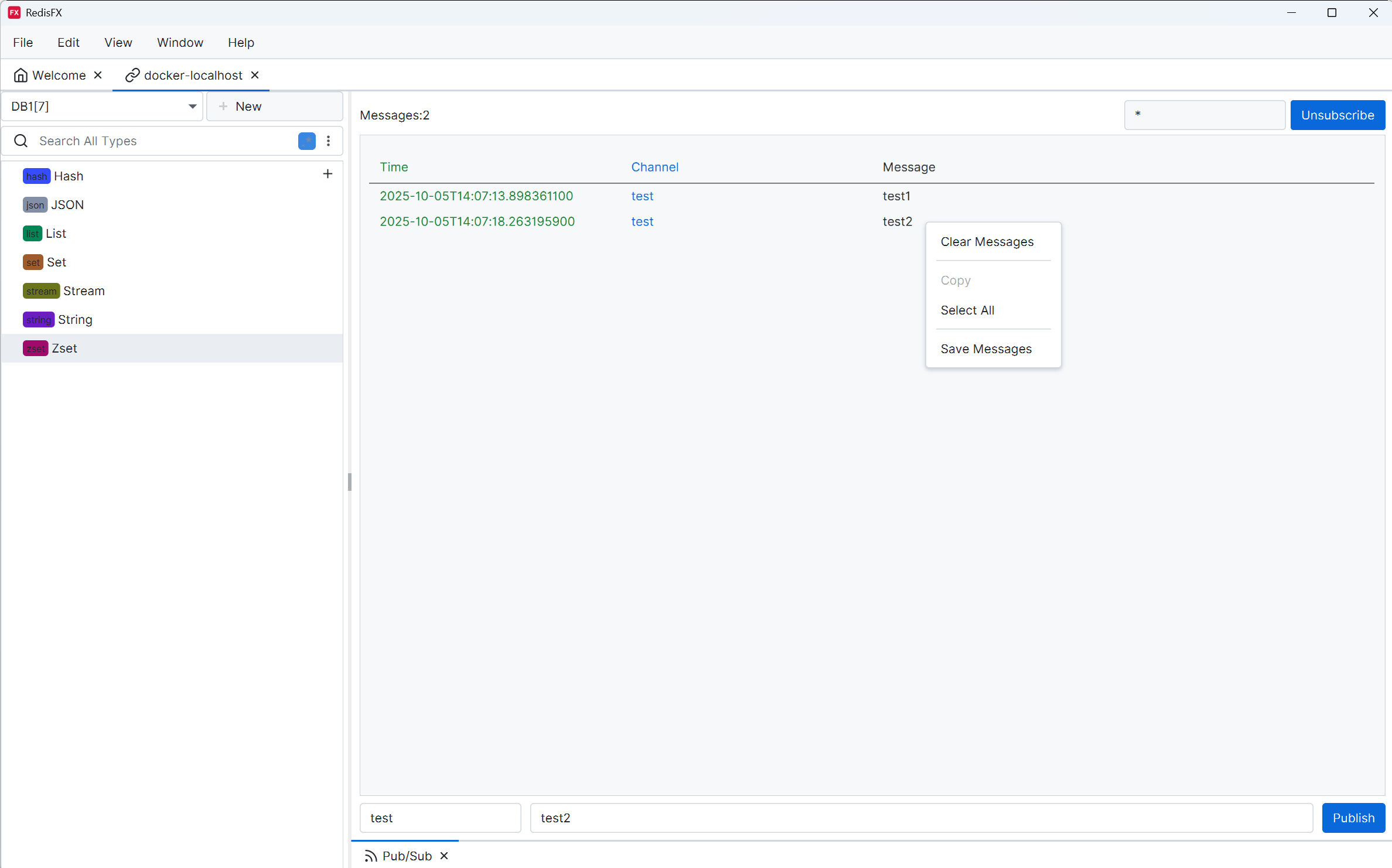User Manual
Connection Management
Opening RedisFX will default to popping up the connection management window, or you can open it by clicking the menu →File → Connection. Then you can create groups and connections in the management interface, supporting operations such as editing, renaming, and deleting.
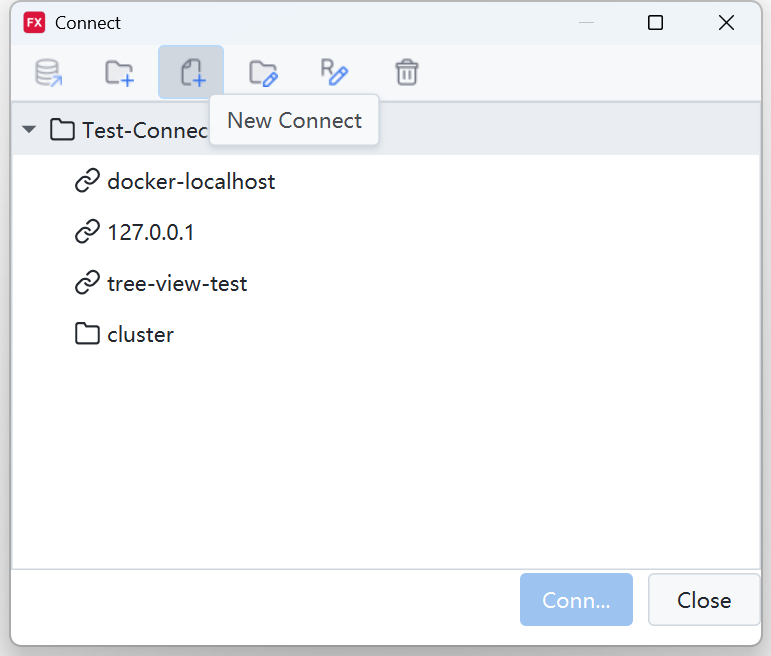
Create New Connection
Fill in the connection name, address, port, and password (leave blank if none), you can click the test button to test, and click OK to complete the creation.
Cluster and Sentinel Mode
For cluster mode, simply check the Cluster Mode checkbox, and it will automatically identify the nodes under cluster mode.
For sentinel mode, after checking, you need to fill in the master node name, and it will automatically identify the slave nodes of the master node.
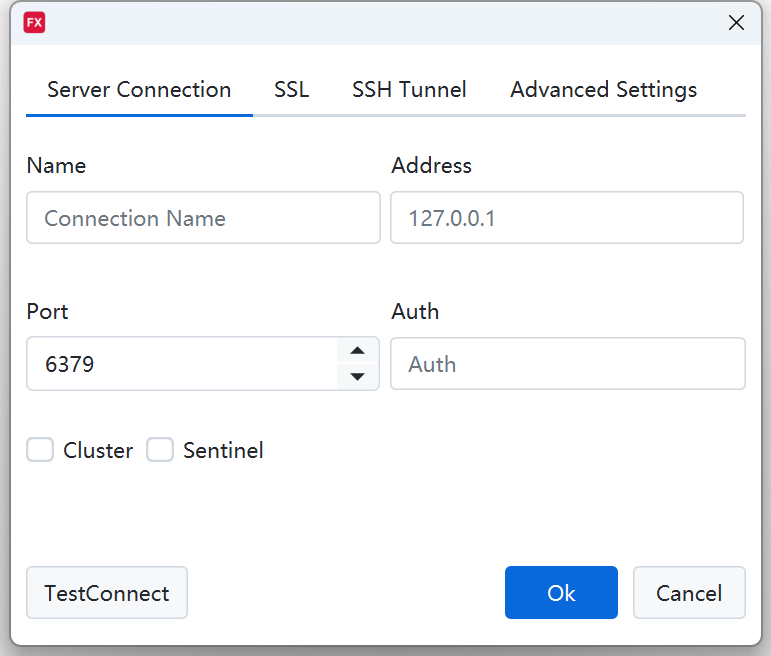
SSL/TLS Protocol Configuration
Fill in the SSL/TLS protocol authorization certificate, public key certificate, private key certificate, and private key password (leave blank if none). You need to check the Use SSL Protocol checkbox for it to take effect.
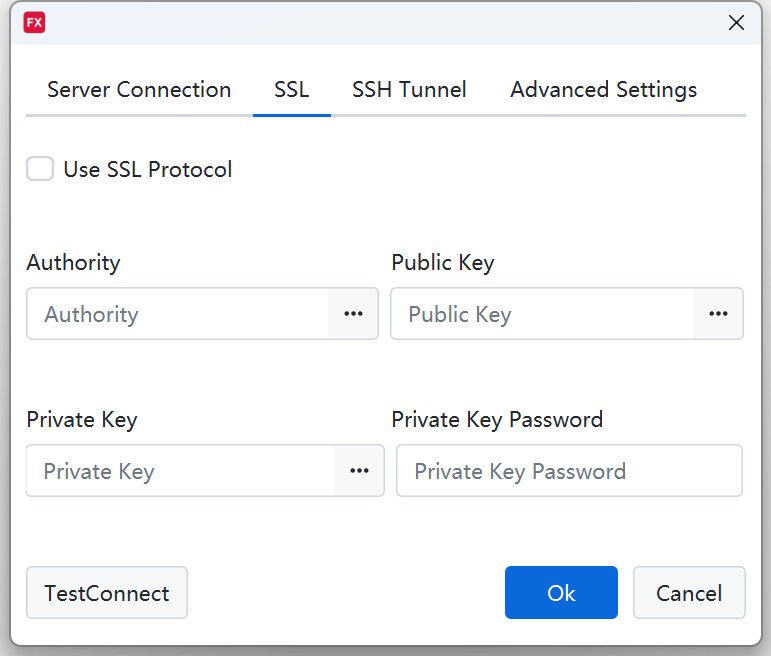
SSH Tunnel Protocol Configuration
Fill in the SSH tunnel protocol address, port, username, and password. If using certificate configuration, you also need to fill in the private key certificate and private key password (leave blank if none). You need to check the Use SSH Connection checkbox for it to take effect.
Port Forwarding
The SSH forwarding port is randomly generated by default. The function of manually specifying the port may be added in subsequent versions.
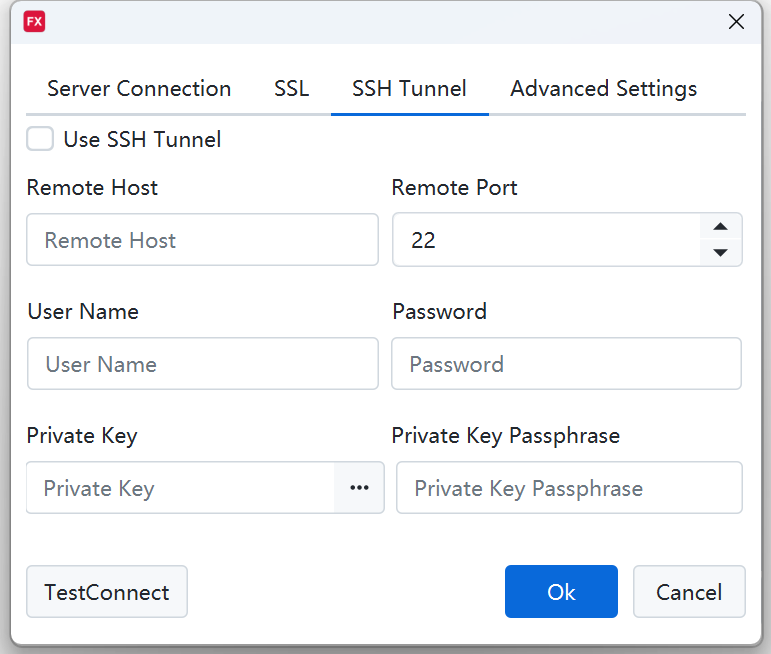
Advanced Options Configuration
Advanced options parameters include: connection timeout, execution timeout, key separator, and display style. Subsequent versions will improve with more parameter configurations such as default key loading quantity and type display.
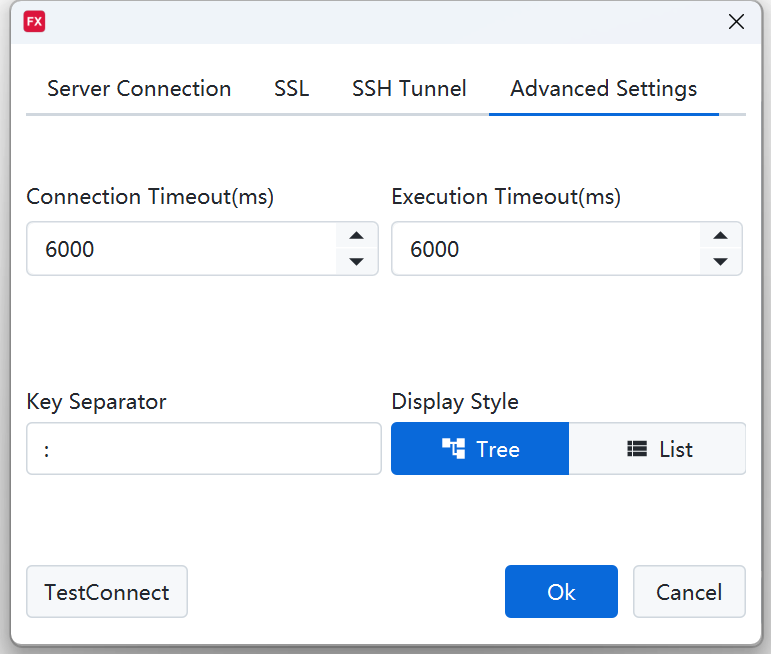
Key Operation Panel
When opening a connection, it will default to loading 500 keys (depending on your configuration in advanced options) and automatically open the report interface. Double-clicking a key can open the details interface, and double-clicking a directory will expand it. It supports Ctrl non-contiguous multi-selection and Shift contiguous multi-selection. After multi-selection, you can perform batch operations on keys.
The report interface displays key statistics information. You can disable the automatic opening of the report interface feature in settings.
Toolbar
If the total number of keys exceeds 500, a toolbar will pop up. Clicking the Load More button in the toolbar can perform segmented loading, or the Load All button to load everything. There are also quick buttons for locating the currently opened key option, expanding directories, collapsing directories, and hiding and showing the toolbar.

Note
Key loading uses pipelined commands for optimization, which improves performance. However, loading a huge number of keys into the application may cause lag. Please use the Load All button with caution.
Search Function
- DB Switching: Click the db dropdown box to quickly switch between databases (cluster mode defaults to only database 0).
- Add New Key: Click the add button and select a type to quickly create a new key.
- Search Trigger: Clicking the 🔍 button or pressing Enter will trigger the search. You can also click the
⋮button to set up automatic search. - Search Type: Defaults to all types. Click the
⋮button to switch search types. - Fuzzy Search: Defaults to fuzzy search. Click the [.*](file://e:\code\java\RedisFX-docs\docs\build.md) button to switch to exact query.
- Search History:
Alt+↓will display recent search records. You can click records to replay or clear the history.

Right-click Menu
- Open: Expand directory or open key details interface
- Refresh: Refresh key list
- Delete: Can only delete keys, supports batch operations after multi-selection
- Clear: Execute flushdb command, will delete all keys, please operate with caution
- Export: Execute dump command to dump keys, supports batch operations after multi-selection
- Checkbox: Key options support checkbox selection
- Console: Open command console window, can open multiple
- Monitor: Open command monitoring window, only one can be opened per connection
- Publish/Subscribe: Open publish/subscribe window, only one can be opened per connection
- Report: Open information report window, only one can be opened per connection
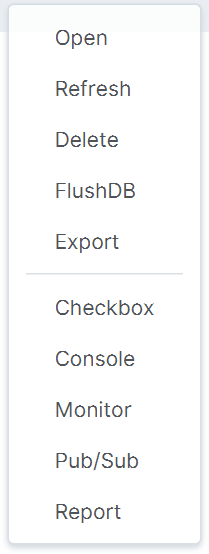
Checkbox Function
Ctrl and Shift are common multi-selection methods in systems. They are quick and convenient with their own advantages. The checkbox is a supplement to these methods, providing users with a more rigorous and intuitive batch operation method. When the checkbox is opened, a secondary menu bar will pop up, supporting delete and export operations on keys.
Note
When using Ctrl and Shift to multi-select key options in RedisFX, only keys will be multi-selected, not directories. If it's a multi-level tree structure, this may bring a poor experience. In such cases, the checkbox mode can be used, which supports multi-selection of directories (including all nodes under that directory).
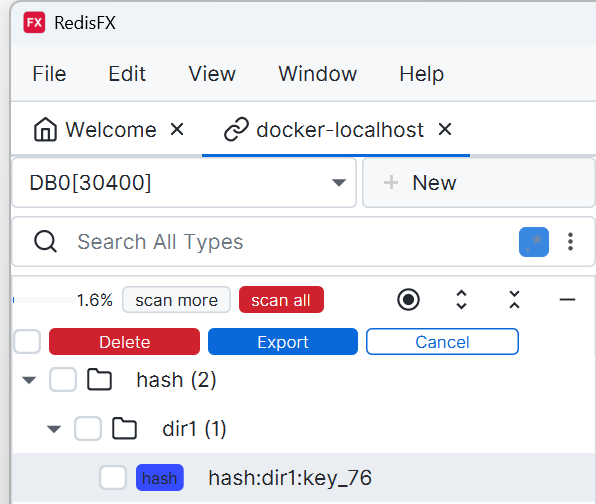
Key Details Interface
The Key details interface is displayed according to the key type. Currently supported key types include String, List, Hash, Set, Zset, Json, and Stream. It uniformly provides Rename, TTL Modification, Delete, and Refresh buttons.
String Type
Redis's String type stores byte arrays, not only supporting text storage but theoretically supporting all types of data, such as images, audio, and video. For this abstract data, the display area uniformly provides viewer and codec selection, displays the data size, and provides quick buttons for copy, import/export. For text-type data, it also provides character encoding selection.
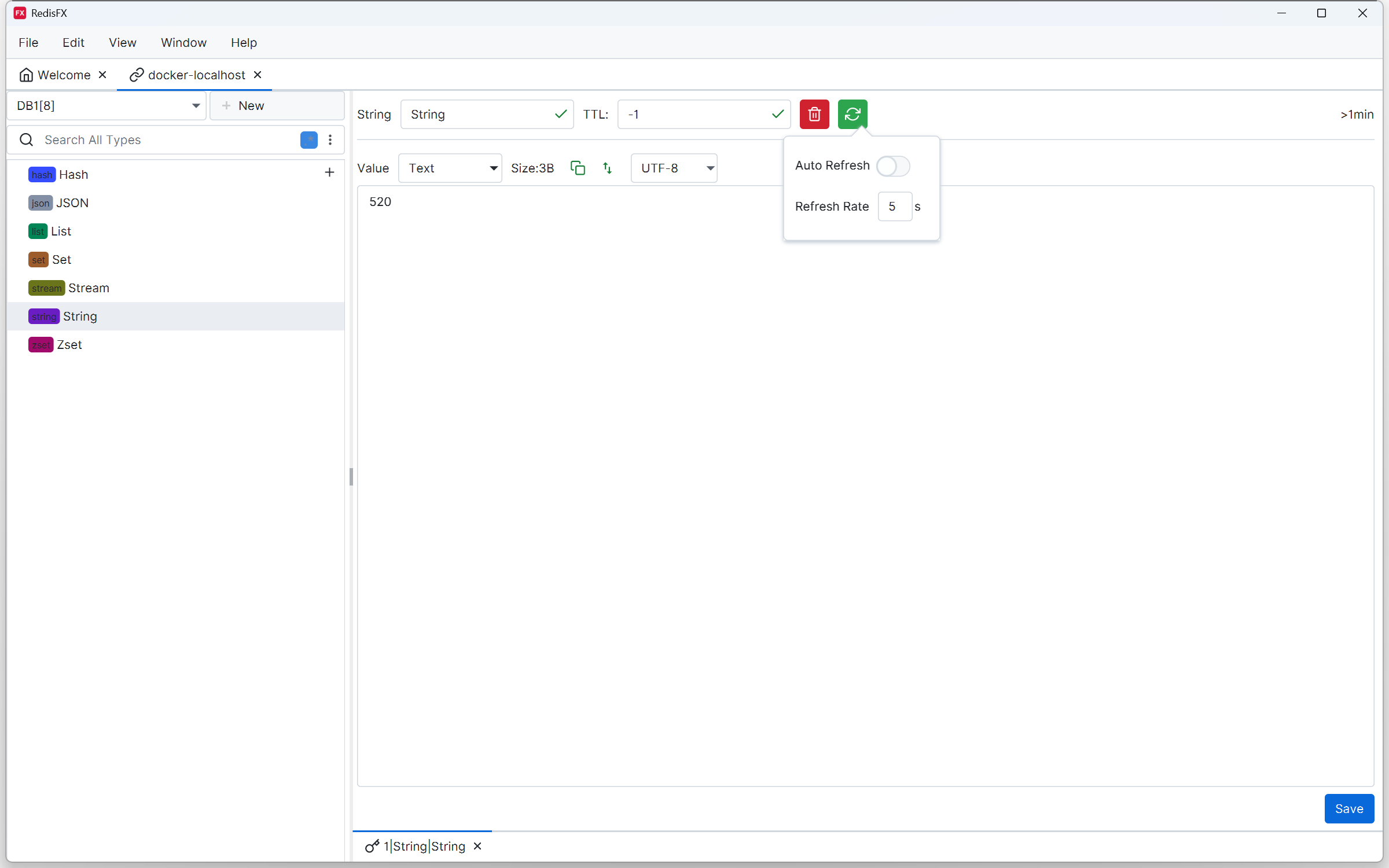
List Type
The List type interface consists of a data list and a list element display area, providing functions to add to head, add to tail, delete from head, delete from tail, and delete selected rows. The element data display area is designed consistently with the String type.
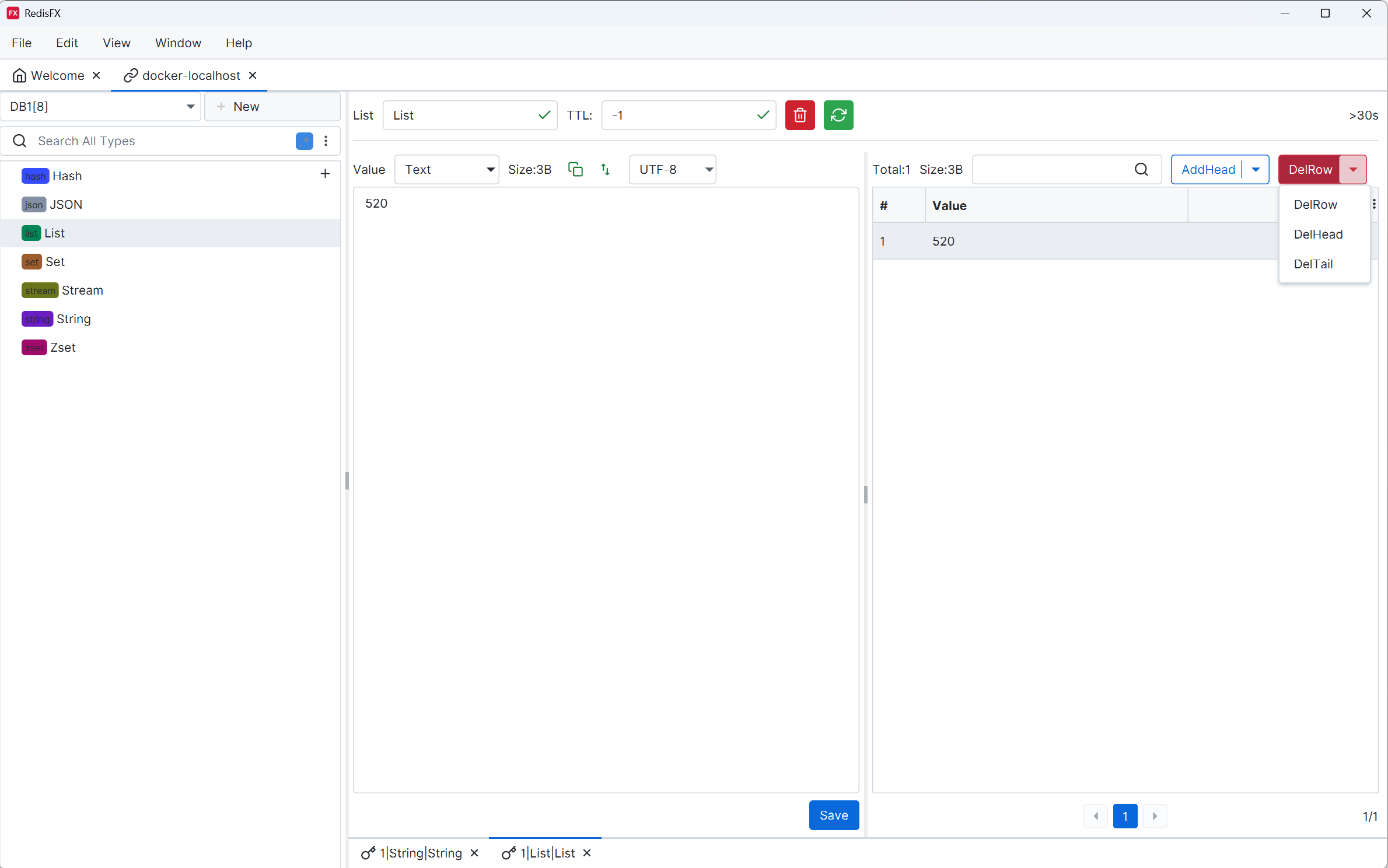
Hash Type
The Hash type interface consists of a data list and a list element display area, providing add and delete functions. The element data display area is divided into two parts: Hash's key and value, designed consistently with the String type.
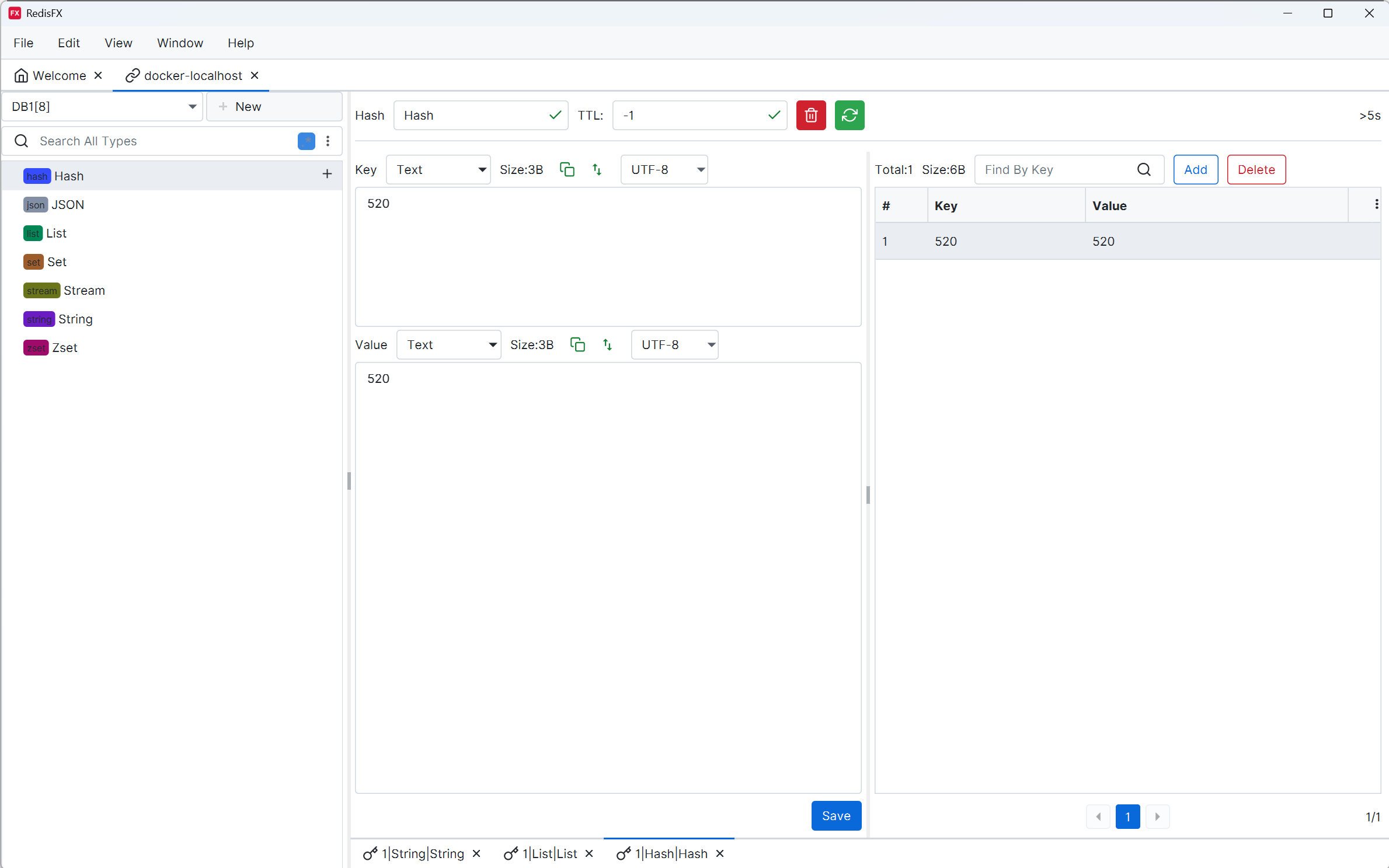
Set Type
The Set type interface consists of a data list and a list element display area, providing add and delete functions. The element data display area is designed consistently with the String type.
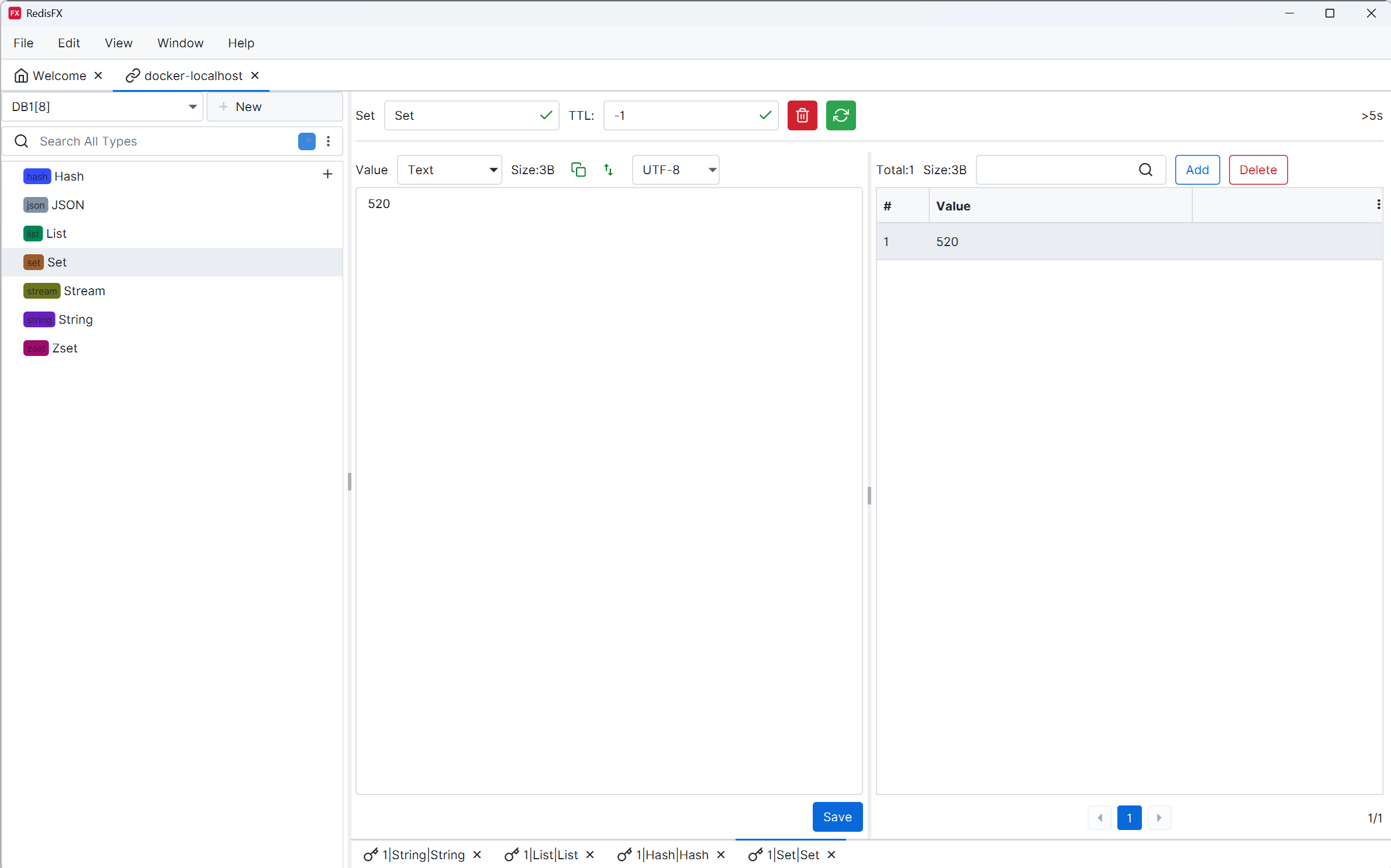
Zset Type
The Zset type interface consists of a data list and a list element display area, providing add and delete functions. The element data display area is divided into two parts: Zset's score and value. The value display area is designed consistently with the String type.
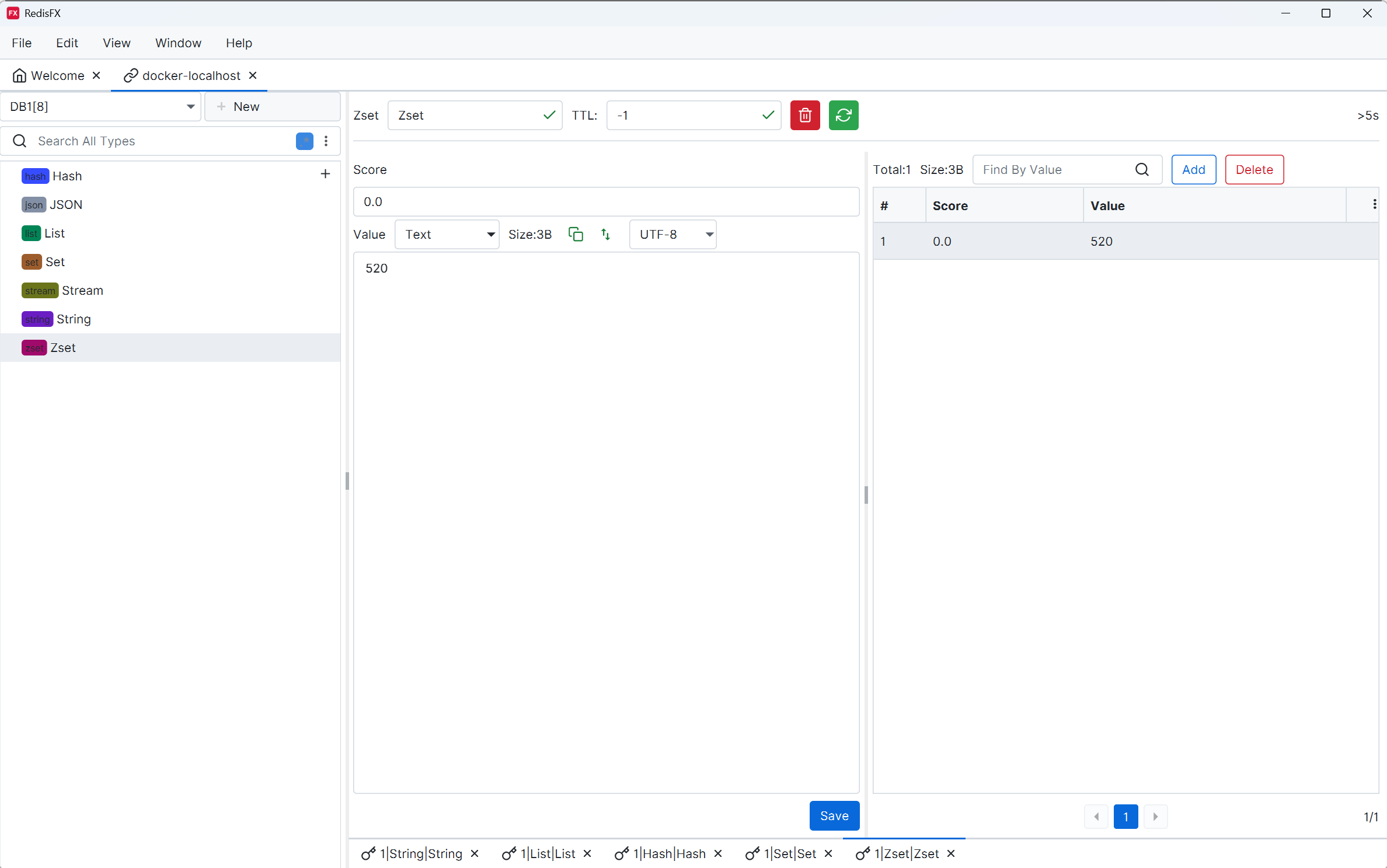
Json Type
The Json type interface is almost consistent with the String type, except that the data can only be Json text.
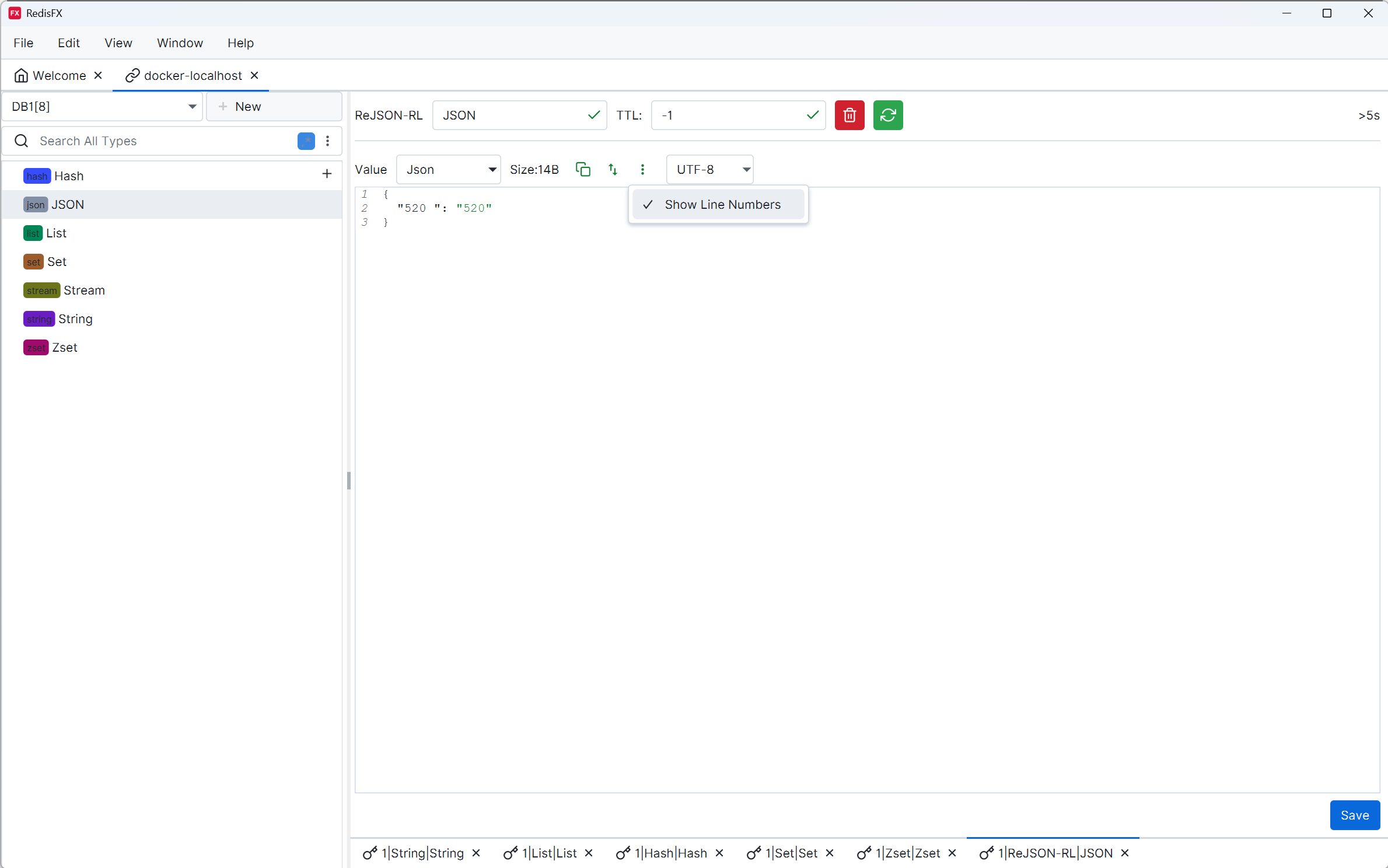
Stream Type
The Stream type interface consists of a data list and a list element display area, providing add and delete functions. The element data display area is divided into two parts: Stream's id and value. The value display area is designed consistently with the String type, and can only be Json text.
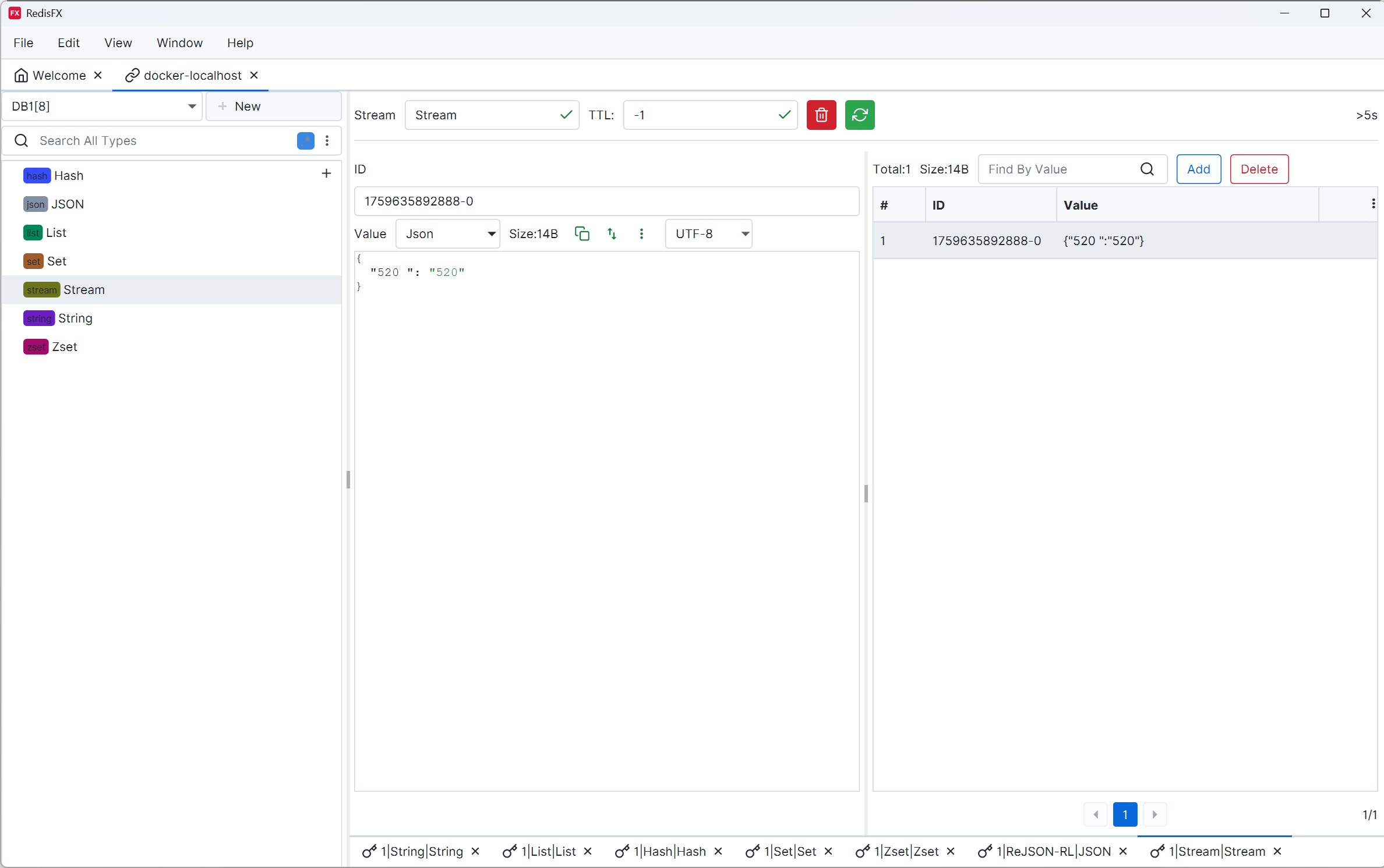
Function Interface
The function interface can be opened through the right-click menu of the key control panel. The function interface includes command console, command monitoring, information reports, and publish/subscribe.
Command Console
- Interact with Redis through commands,
Enter keysends commands,clearcommand clears the display box. - Entering commands or pressing
Tab keywill pop up a command suggestion box. Press↓ keyto make selections, then pressEnter keyto confirm the selection. - Use
↑ keyand↓ keyto look up historical input commands.
Note
Command suggestions come from Redis documentation and may not be complete.
The default display data is 1000 lines. If the result exceeds 1000 lines, it will be automatically truncated, such as the keys * command.
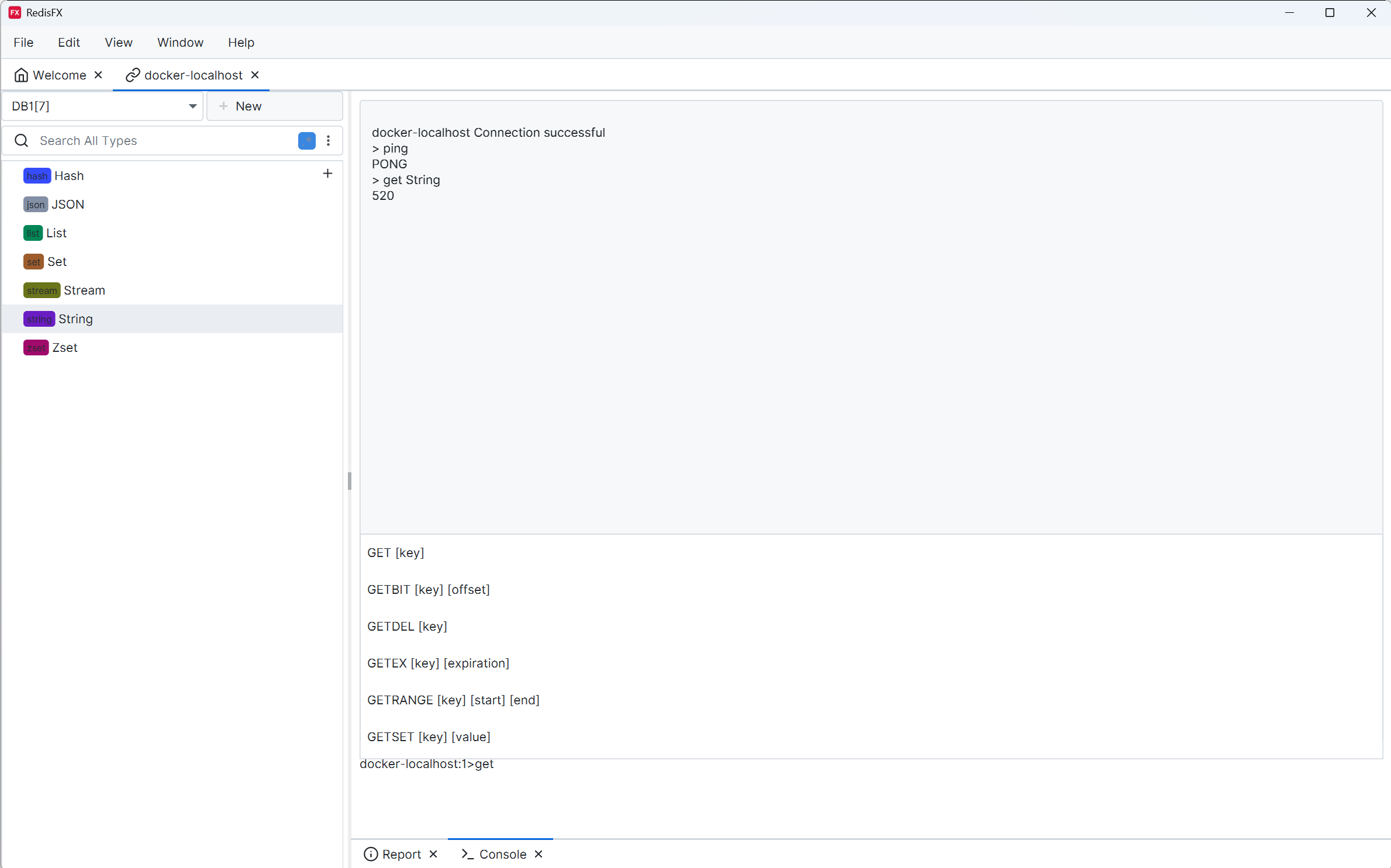
Command Monitoring
- Monitor Redis commands, displaying command invocation time, calling host, and command information.
Note
Command monitoring generates additional overhead and reduces throughput. Avoid using this feature in production environments.
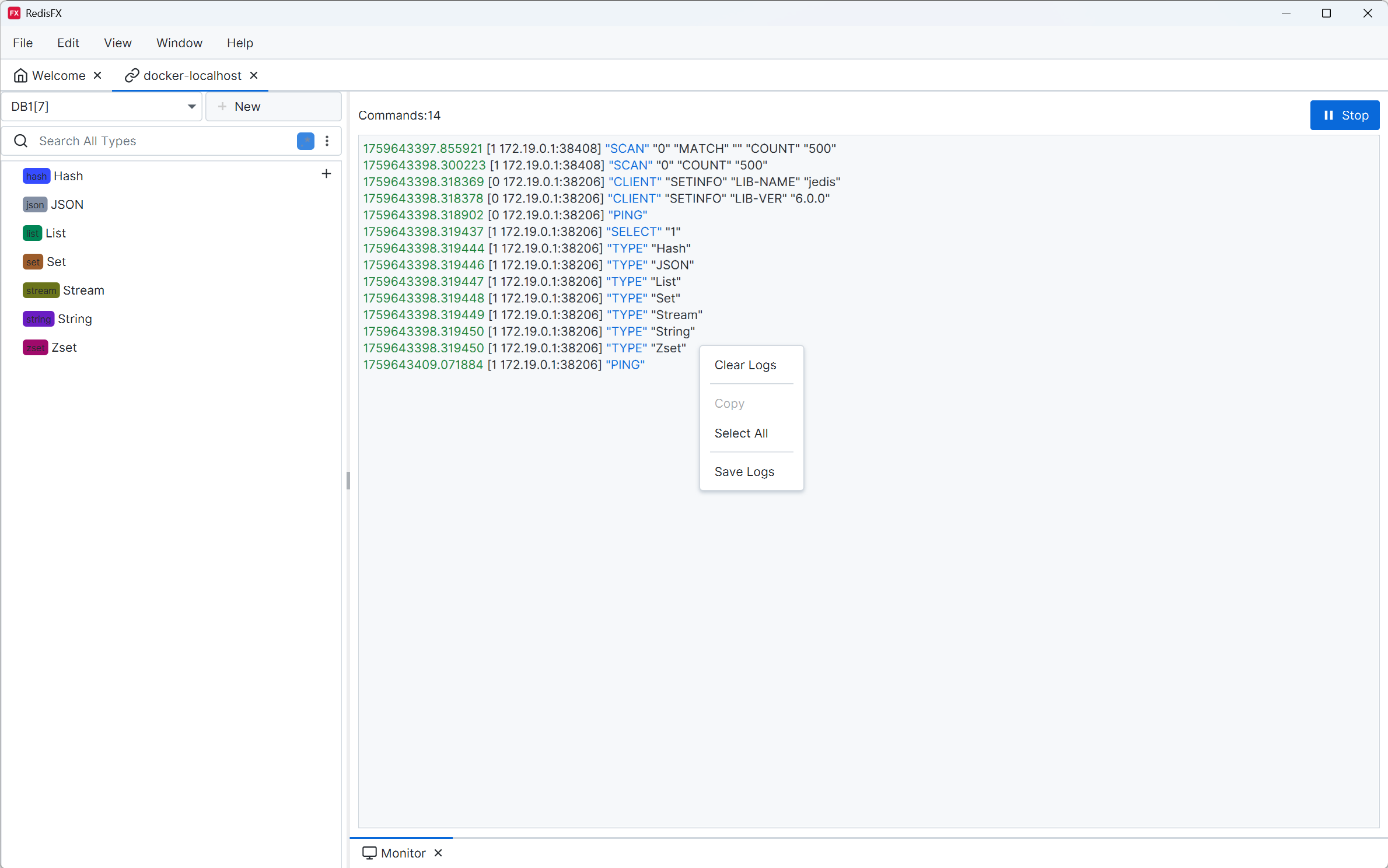
Information Report
Statistics on Redis information, including key count, memory usage, command invocation counts, etc. If you have better ideas, welcome to submit an Issue.
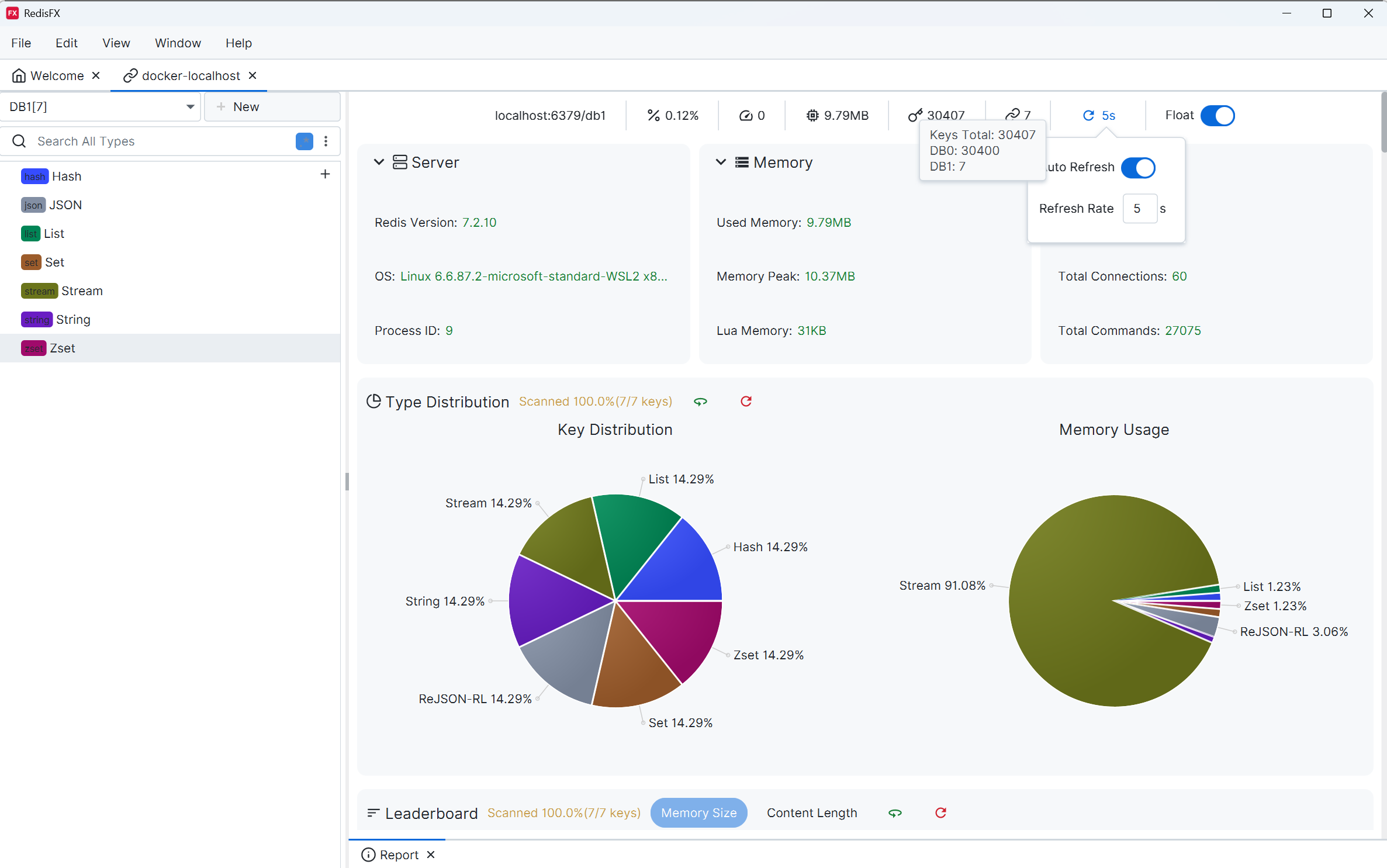
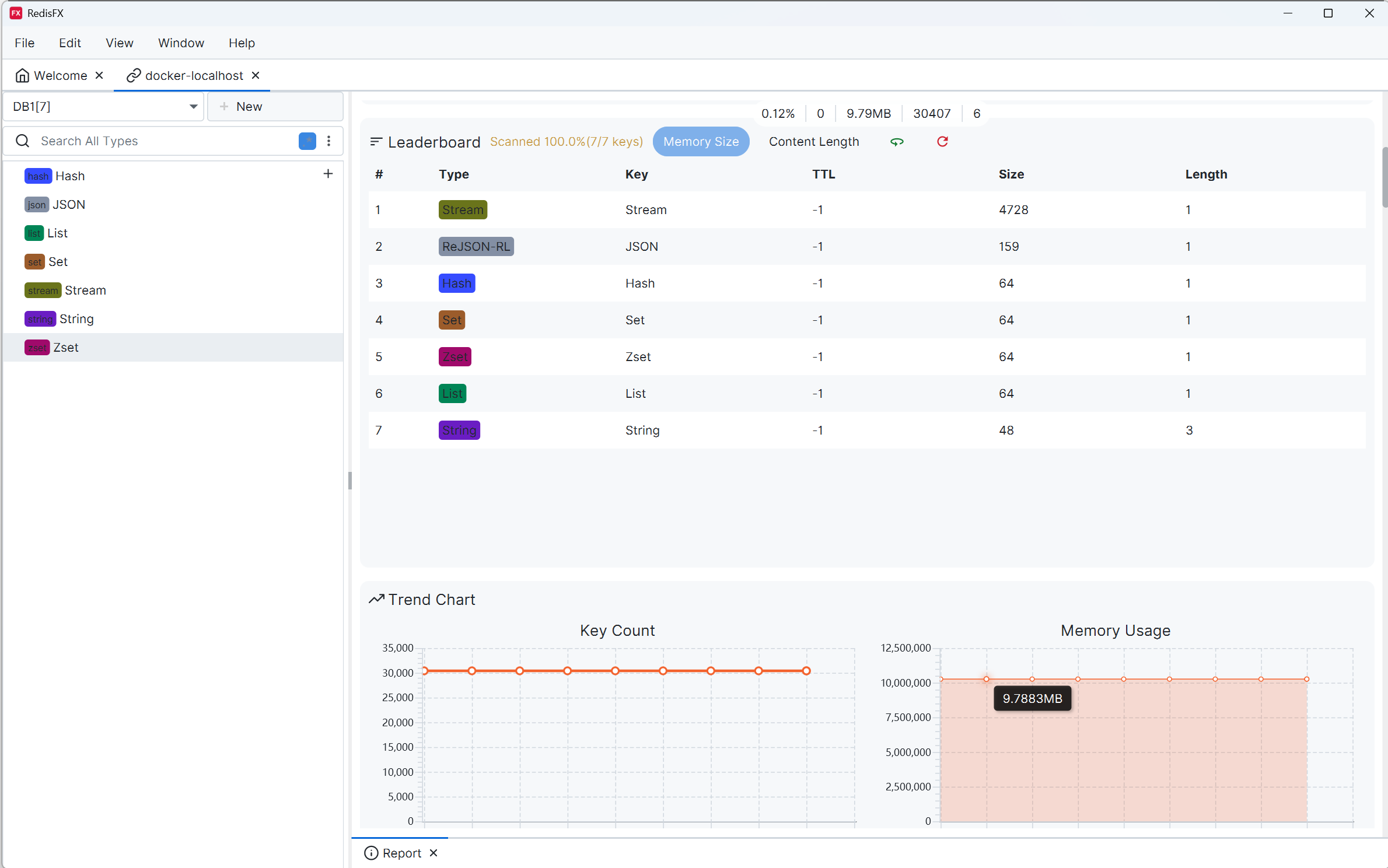
Publish/Subscribe
Supports publish/subscribe functionality.
